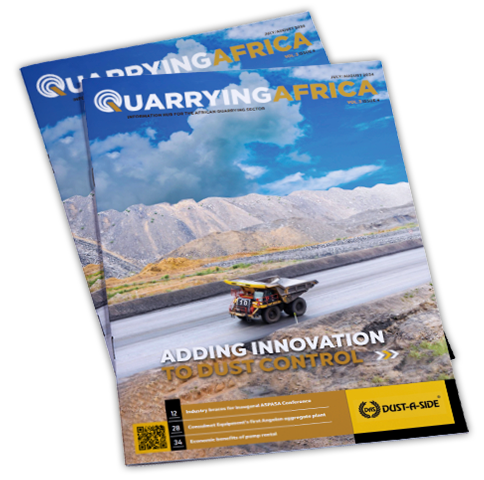Equipment selection problems in surface mining involve choosing a fleet of trucks and loading tools that have the capacity to move the material specified within a stipulated period. In a one-on-one with Quarrying Africa, Nick Kyriacos, GM: Central Region for Bell Equipment Sales South Africa, unpacks some of the key factors that affect the selection of a load & haul fleet. By Munesu Shoko.
The productivity of any surface mine hinges on the efficiency of its load and haul system. Yet, this function represents a significant component of the total operating cost. Consequently, the incentive to reduce cost in this area remains high.
The truck and excavator combination remains the most common materials handling solution in surface mining operations such as quarries in southern Africa. Commenting on the importance of truck per shovel match factor, Kyriacos says the starting point is to always look at the production required per day or per month, and then determine the production required per hour to meet the daily or monthly target. From this, fleet managers can ensure that they have an excavator with the right capacity to load the truck at a rate that allows them to deliver on their targeted production rates.
Typically, he says, excavators are slightly more efficient than wheel loaders, and four to six passes per truck remains the industry benchmark, although it is still acceptable to achieve up to seven passes.
“The loading cycle can be divided into two key areas. The first is the time that it takes for the truck to get into position to be loaded together with the time taken by the excavator to fill the bin. The second consideration is the amount of time that it takes for the truck to leave the loading area, travel to the dump site, dump its load and return to the loading tool,” explains Kyriacos.
“The truck’s cycle time presents opportunity to load other trucks. For example, if it takes two-and-a-half minutes for a truck to get into position and be loaded, and then 10 minutes more to complete the haulage cycle and be back and ready to be loaded, it means there is opportunity to load four more trucks in that period. Five trucks in a cycle would be the most efficient for that operation to achieve the required productivity.”
Kyriacos says it is therefore important to make sure that the loading tool can achieve the loading rate required. Additionally, depending on the time it takes for the truck to complete its cycle, production managers would want to ensure that the loading tool is being used continuously, to ensure that run of mine material is moved at the required rate.
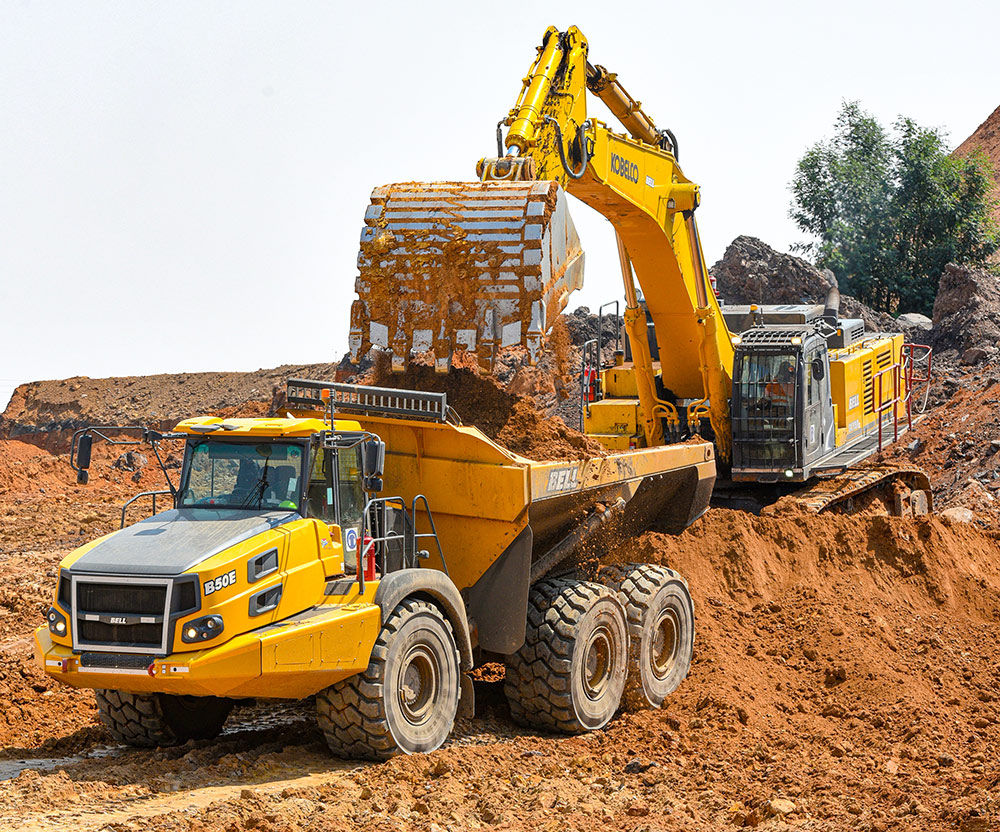
Choosing the fleet
Commenting on the key factors to be considered when choosing a load and haul fleet, Kyriacos says the key is always cost per tonne. “You need to get a fleet that gives you the lowest cost per tonne. The main contributors to this are product durability, service and maintenance costs, fuel economy and productivity. Productivity needs to be factored in because it doesn’t help to have machines that run cheaper per hour rates, but don’t necessarily translate into a cheaper per tonne operation. In the same vein as durability and quality should be a good residual value of the product at the end of the day, which is an important consideration when making purchasing decisions,” he says.
Service costs, he adds, are a black and white comparison between products and it is a consistent cost that is always there. Fleet owners must service their machines – that cannot be reiterated enough. Durability talks to reduced repair and maintenance costs, because the more durable the machine is, the less money fleet owners will spend on repairs and maintenance.
Another factor critical to durability is the cost of downtime, adds Kyriacos, because a primary loading tool can cost you all your production – when it breaks down your hauling tools also have to stand. Even with just one truck standing, an operation still loses a substantial portion of its production. The cost of downtime can be damaging; thus, operations managers need to make sure they have durable load and haul kit on site.
“Fuel economy is application specific, but it is probably the biggest cost in terms of cost per tonne. Both Bell and Kobelco have huge fuel efficiency focus without compromising on productivity,” he says.
Other specific application factors that affect the overall efficiency of the excavator and truck combination include correct bucket and bin capacities based on the material’s specific gravity or density and choosing the right ground engaging tools – bucket tips, bin liners and wear packages.
“On the Kobelco side, Bell Equipment offers heavy-duty general-purpose buckets and heavy-duty rock buckets suited to a wide variety of materials. This allows us to cater for various needs on different sites,” he says.
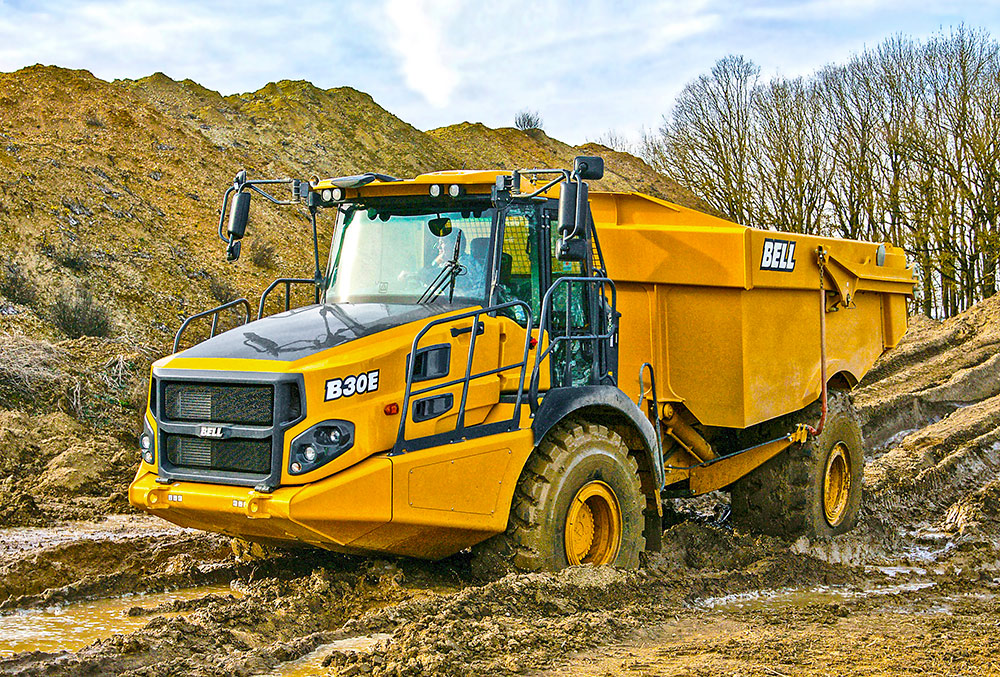
Efficiency in focus
Having a mismatched excavator can lead to bottlenecks at the loading and/or discharge points, thus negatively impacting efficiency. Matching the load capacity of the machines to the material they are handling also adds to efficiency.
“If loading a light material, make sure you have a large bin and a large bucket to maximise capacity. Being able to access and use all areas of the bin when loading is another consideration. It’s also important to bear in mind that using a half bucket load to reach a truck’s full capacity uses almost the same fuel as a full bucket load,” explains Kyriacos.
To ensure maximum fill factor, Bell ADTs are fitted with loading lights that help the excavator operator to always reach maximum bin capacity given that underloading is inefficient for an operation and overloading can be detrimental to the truck. The lights shine amber to indicate that loading has started and switch to a green flashing light once 75% capacity has been reached. A solid green light indicates 100% bin capacity, and a red light shows overloading. The ADT operator can also monitor the loading operation from the central display unit on the truck’s dashboard. Moreover, the Bell three-point weighing system provides best-in-class accuracy of within 5%.
In addition, the design of the loading area, how the trucks need to position themselves, the space that they have and how long it takes them to get into position, all affect the efficiency of the operation. Trucks that need to reverse some distance to reach the loading area are far less efficient than trucks that can drive in parallel to the loading area.
“Operations managers would, as far as possible, want to ensure that the truck arrives just in time to be loaded. It is important to avoid standing time throughout the cycle because standing translates into unnecessary fuel burn. This is one area where we see a big advantage of autonomous control in the future because autonomy can pick up where the bottlenecks are and allow the truck – based on the programmed knowledge of the haul profile – to take advantage of downhills and optimal gear selection going uphill to get to the tipping site as the other truck departs and avoid any congestion,” says Kyriacos.
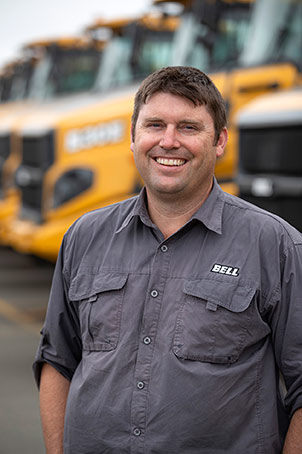
Wide range
According to Kyriacos, Bell Equipment offers the widest range of ADTs on the market, with a 6×6 offering ranging from 18 t to 50 t, complemented by a niche range of 4×4 articulated trucks in the 30 t, 45 t and 60 t classes. A key factor to consider when choosing trucks is whether a 6×6 ADT is necessary or if an articulated 4×4 truck would be suitable for the underfoot conditions on site. In some operations, the 4×4 trucks outperform the 6×6 trucks in terms of tyre wear due to the significantly reduced scuffing while offering the same productivity.
All Bell Equipment ADTs are fitted standard with the company’s proprietary satellite fleet management software, Fleetm@tic® which allows operations managers to track productivity in detail per operator, per cycle, per shift. It also gives a quick glimpse of bottlenecks by highlighting all unladen and laden idling times.
“If laden idle times are more than 5%, this points to either congestion at the tipping area or mismatched equipment. It could also mean that there is congestion at the loading area – either there are too many trucks in the cycle, or the excavator is too small,” says Kyriacos.
Prominent combination
Commenting on Bell Equipment’s most popular excavator/truck combination in the quarrying sector, Kyriacos says the Bell B25E 6×6 and B30E 6×6 ADTs matched with either the Kobelco SK380XDLC-10 or SK520XDLC excavators are the company’s most common combinations due to their overall productivity and value proposition.
The Kobelco SK380XDLC-10 is a 40 t machine with rated power of 191 kW and a 2,1 m³ bucket, while the Kobelco is a SK520XDLC is a 50 t excavator with rated power of 257 kW and a 3,4 m³ bucket.
“The B30E 4×4 is gaining popularity in quarries where underfoot conditions permit. Some of the key benefits of this model are the tighter turning circle and reduced scuffing for increased tyre life and reduced haul road maintenance,” concludes Kyriacos.
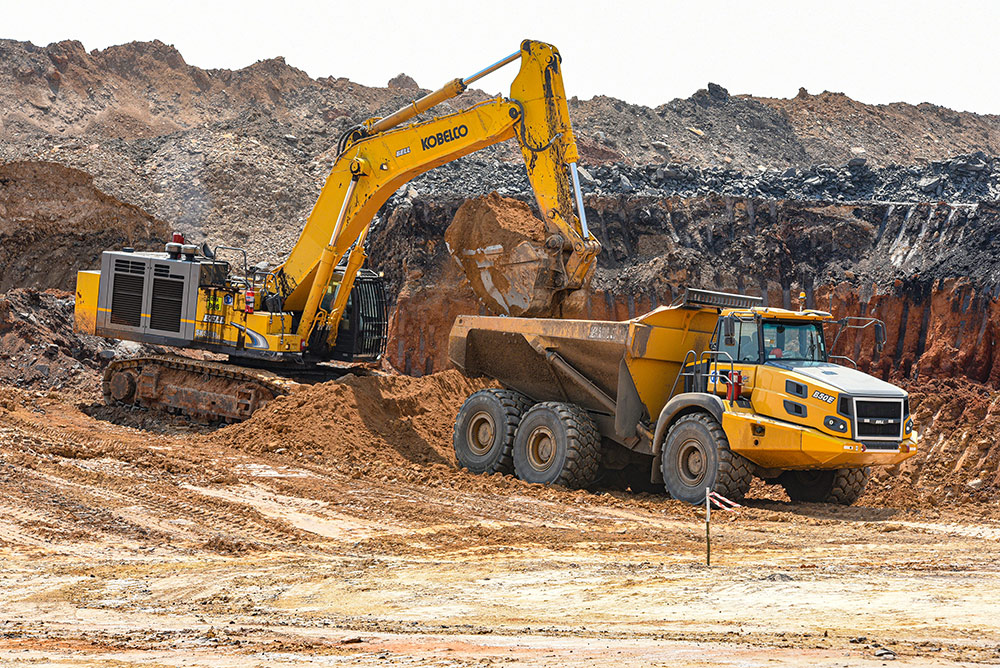
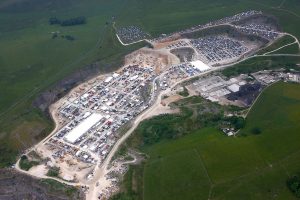
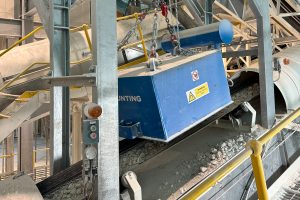


![Data from the World Risk Poll shows that one in five (21%) people in mining and quarrying occupations have experienced harm at work in the past two years. [Photo by Shane McLendon on Unsplash]](https://quarryingafrica.com/wp-content/uploads/2024/10/shane-mclendon-89hUOLtVfoI-unsplash-300x225.jpg)
